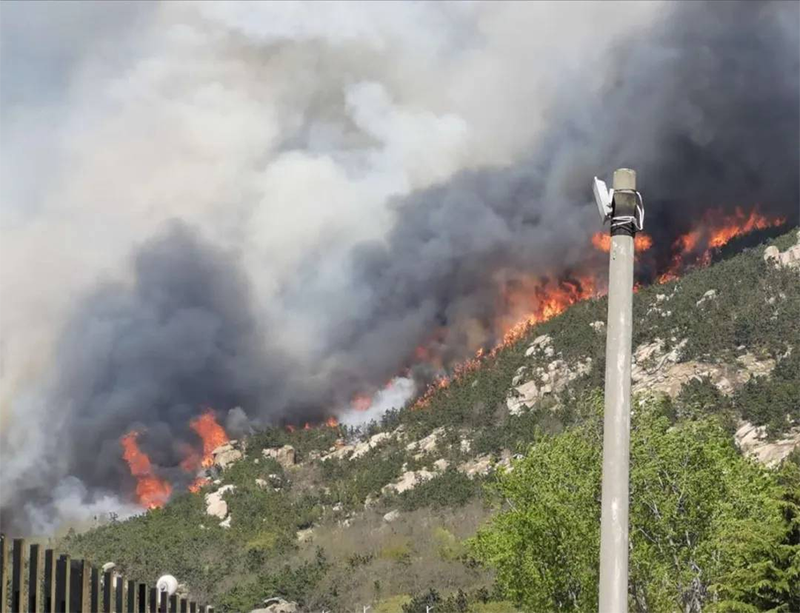As the power grid continues to expand and develop, overhead power lines are reaching increasingly remote and geographically challenging areas, such as mountainous forests with rugged terrain. This expansion has heightened the threat to grid safety posed by forest fires in these regions. In mountainous and forested areas with complex and diverse terrain, when wildfires break out suddenly, due to the absence of intelligent wildfire warning systems, power companies only receive emergency calls after multiple sections of high-voltage overhead transmission lines have tripped, resulting in significant disruptions to power supply for a large number of users.
As can be seen, the traditional manual patrol method used by the power sector in the past was unable to promptly detect the presence of fire sources. Only by utilizing the new-generation online monitoring devices for wildfire prevention on power transmission lines can we effectively address the issue of wildfire hazards. Especially with the arrival of summer, when the hot climate, frequent thunderstorms, and high air humidity create ideal conditions for power transmission line accidents, the implementation of wildfire prevention measures for power transmission lines is of utmost urgency. How can we detect and locate wildfires early to mitigate the threat before it escalates? The intelligent wildfire monitoring system for transmission lines has emerged as a solution, serving as the "eyes in the sky" to safeguard grid safety.
The core of this device lies in its dual-spectrum intelligent sensing technology: thermal imaging technology continuously scans day and night, and once it detects an abnormal temperature point, the system immediately identifies the potential source of fire. High-definition visible light cameras work simultaneously to capture smoke characteristics, and the two work together to analyze the data, effectively eliminating interference from sunlight reflection and vehicle lights, thereby significantly reducing the false alarm rate. The device acts as a "sentinel" on the power grid, conducting 24/7 uninterrupted automatic patrols with a coverage radius of several kilometers. Upon detecting a fire or overheating hazard, it immediately transmits the latitude and longitude coordinates, on-site images, and real-time temperature data to the monitoring center via a wireless network. The system platform swiftly processes the information, automatically issuing graded alerts to secure the critical "golden time" for emergency response.
Intelligence and reliability are the key factors that set it apart from traditional inspection methods. Traditional manual inspections and fixed observation methods are inefficient and have blind spots, especially at night or in adverse weather conditions. In contrast, intelligent monitoring devices enable round-the-clock, all-angle, automated "surveillance," with warning speeds improving from "hourly" to "minute-level," truly achieving "early detection and swift response," significantly enhancing the power grid's resilience against wildfires. After deploying equipment in critical corridors, a provincial power grid successfully issued early warnings for multiple initial fire incidents, enabling emergency teams to respond promptly and prevent several potential line tripping and large-scale power outage incidents. Within a single fire prevention season, the grid achieved a "zero tripping" record for wildfire-related lines.
Amid the surging tide of green energy, the smart fire prevention monitoring equipment for power transmission lines uses its technological vision and swift action to build a robust smart firewall for the vast power grid. It quietly stands guard amidst the rugged mountains, transforming invisible threats into tangible warnings, ensuring that light continues to flow and that millions of homes remain safe and sound—this is a vivid illustration of how technology safeguards the very foundation of modern civilization.





